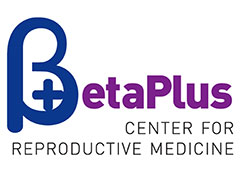Ovarian hyperstimulation syndrome (OHSS) is a serious complication of ovarian stimulation for an IVF/ICSI cycle, characterized by enlarged and painful ovaries and difficulty breathing. It rarely occurs after stimulation with chlomiphene, but significantly more frequently after stimulation with gonadotropins. There are mild, moderate and severe forms of OHSS. Moderate and severe forms of hyperstimulation rarely occur, but usually require long hospitalization. Several deaths have also been reported.
Risk factors include young age, development of multiple follicles during stimulation, polycystic ovaries and high levels of estradiol. Injection of hCG, which is used as a trigger for ovulation, usually aggravates the condition,
The cause of OHSS is a development of so-called vascular permeability, i.e. blood vessels allow the passing of fluids which then accumulate in body cavities (abdomen, pleural cavity, etc)
Symptoms of ovarian hyperstimulation include bloating, nausea, diarrhea and weight gain in mild cases. In moderate cases these symptoms aggravate which results in rapid weight gain (over 1kg daily), vomiting, diarrhea, decreased urine frequency, dark urine and extensive thirst. In severe cases all of these symptoms are additionally intensified, and because of the fluid accumulation additional symptoms occur, such as heavy breathing, abdominal pain due to overstretching and fluid accumulation, renal failure, etc.
Ovarian hyperstimulation syndrome can be additionally worsened by a so-called ovarian torsion (OT), thrombosis or renal failure, which rarely occur. Symptoms usually last for 1-2 weeks, longer pregnancy occurs, and typically they stop after the first trimester of pregnancy.
There are no specific treatment for the OHSS, but the symptoms are treated. Recommendations include bed restg, hospitalization in moderate and severe cases to enable monitoring of vital functions, fluid substitution, analgesia and potential fluid evacuation. If during the IVF cycle it becomes clear that OHSS will develop, reproductive gynecologist may skip a few days of stimulation (called “coasting”), aspirate one ovary a day or two before actual aspiration in order to reduce estradiol levels, or cancel the cycle. All of the above procedures will significantly reduce the risks of OHSS.
Nowadays, ovarian hyperstimulation syndrome (OHSS) is usually avoided by using GnRh agonist injection as a trigger, instead of HCG trigger.




